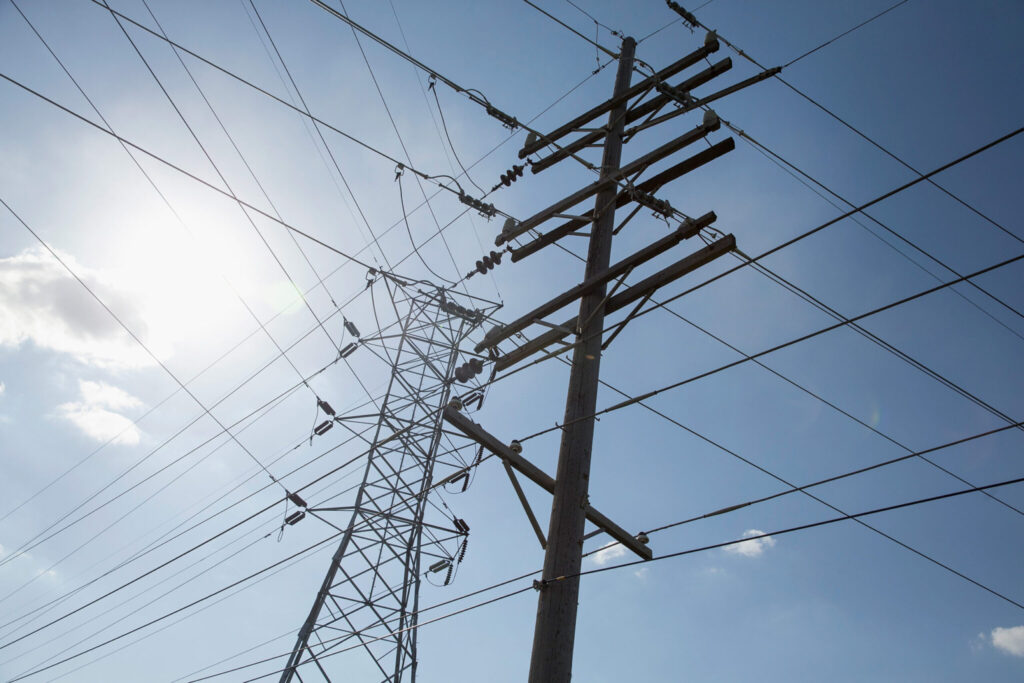(Photo by Scott Olson | Getty Images)
Montanans want legislators to make sure the Montana Consumer Counsel looks out for families and small business customers of NorthWestern Energy as the utility asks for another rate increase — on the heels of a 28% hike approved in a settlement last year.
Members of the public said other states, such as Texas, are moving toward more affordable, renewable resources, but NorthWestern Energy is still “chaining” customers to outdated technologies that are both costly and harm people’s health.
“It’s really absurd,” said Joanie Kresich, of Livingston. “Their shareholder pocketbooks are bulging, and we’re struggling to make ends meet.”
The company reported “solid earnings growth” at the end of July — $31.7 million in the quarter compared to $19.1 million in the same period in 2023 — primarily due to “new base rates in Montana and South Dakota, electric transmission revenues, Montana property tax tracker collections, and electric and natural gas retail volumes.”
The Legislative Consumer Committee, which appoints the Montana Consumer Counsel, heard comments Monday about the new rate case. The Montana Consumer Counsel represents customers before the Montana Public Service Commission, which regulates public utilities.
In the most recent rate case, the Montana Consumer Counsel supported a settlement agreement with NorthWestern Energy, and members of the public urged legislators to ensure the counsel was working on their behalf in the new case.
In the current request, NorthWestern has argued it has invested more than $1 billion into Montana natural gas and electric businesses by the end of 2024, including $310 million in a methane-fired plant in Laurel, and it should recover those costs.
NorthWestern has estimated the increase to residential electric bills at 8.3%.
However, Nick Fitzmaurice, with the Montana Environmental Information Center, told committee members that’s an initial estimate on paper, and it may not reflect reality.
He said he’s concerned the structure of the new request means NorthWestern will be able to hike up rates even more in its quarterly adjustments — and those adjustments aren’t given the same scrutiny.
“We’ve been locked out of NorthWestern’s planning and decision-making process, and our pleas have gone largely unanswered by the Public Service Commission,” Fitzmaurice said.
Last year, the all-Republican five-member Public Service Commission voted unanimously in support of the settlement agreement NorthWestern Energy hammered out with some parties to the case, but not all; the agreement pushed up rates from $91.27 a month in August 2022 to $116.63 on average for residential customers, according to an exhibit from the case.
This summer, however, the Public Service Commission said the utility botched its application for higher rates and failed to provide adequate details to justify its request, and on the advice of agency staff, told NorthWestern to cough up more information — twice.
At the hearing Monday, though, members of the public said NorthWestern can’t be trusted to have the best interests of ratepayers in mind. Many also called on lawmakers to help the Public Service Commission see the benefits of clean, renewable energy.
Dr. Lori Byron, a pediatrician with a master’s in energy policy, said 89,000 children in Montana live in poverty, and even more are near the poverty line.
“I already see families who have to decide between food for their family or inhalers for their children,” Byron said.
She said the large rate increase last year is already creating hardship for families, and she asked legislators to keep the Montana Consumer Counsel advocating for what’s best for children in the new rate case.
During public comment, Sen. Mary Ann Dunwell praised members of the committee and the Montana Consumer Counsel for their work.
Dunwell, who is not a member of the committee, said the work is important in part because the decisions the PSC is making are hurting constituents, although she said commissioners mean well.
She said Montanans are experiencing a “triple whammy” when it comes to affordability, with increases in property taxes and the cost of housing, high energy bills and health care.
“You’re my constituents’ only hope,” said Dunwell, a Democrat who represents Helena and East Helena.
Many members of the public also said affordable and clean options are not only available, they’re popular in other places.
Abby Huseth, with Climate Smart Missoula, said in 2024, roughly 94% of electric grid capacity that has been added is in renewable energy and storage: “This is happening today. This transition is happening today.”
But NorthWestern isn’t presenting those options to the public, said Huseth, also a customer of the utility.
“We don’t believe that they are really taking the best options available on the table here today and presenting them to Montanans,” Huseth said.
Karen Jarussi, of Billings, pointed to the $320 million plant NorthWestern Energy is building in Laurel as one example of a bad investment. She said that money would go a long way toward solar, new battery technology, and free sources of energy.
“We need to turn that ship around and make a dramatic shift to the technology of today and of the future,” Jarussi said.
Karin Kirk, a geologist in Bozeman, said some people argue that renewable sources are variable, but she said she considers it a hobby to watch the transmission and generation of electricity in the region.
She said the coal-fired plant at Colstrip is variable; it is running at half speed now, as it did during a couple of extreme temperature swings this year. She said NorthWestern has done a great job of preventing blackouts, but its market purchases as a result are costly for customers.
In the meantime, she said, the neighboring Dakotas are 8th and 9th in per capita clean energy jobs, and Montana is ranked 46th, even though it has the 7th-best wind resources in the nation. But it’s also 49th in wind jobs.
She said neighboring states are innovating and being part of a modern energy economy: “I hate to watch other states do better and think, ‘Why aren’t we?’”

